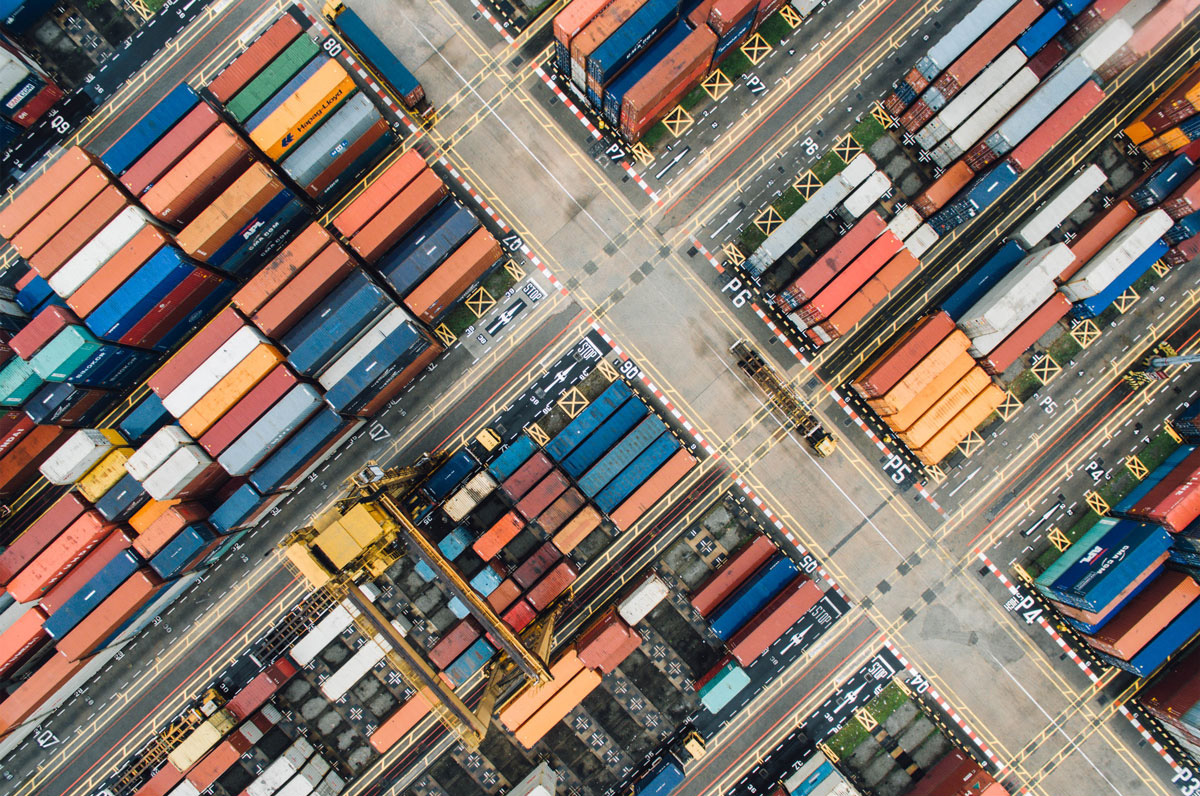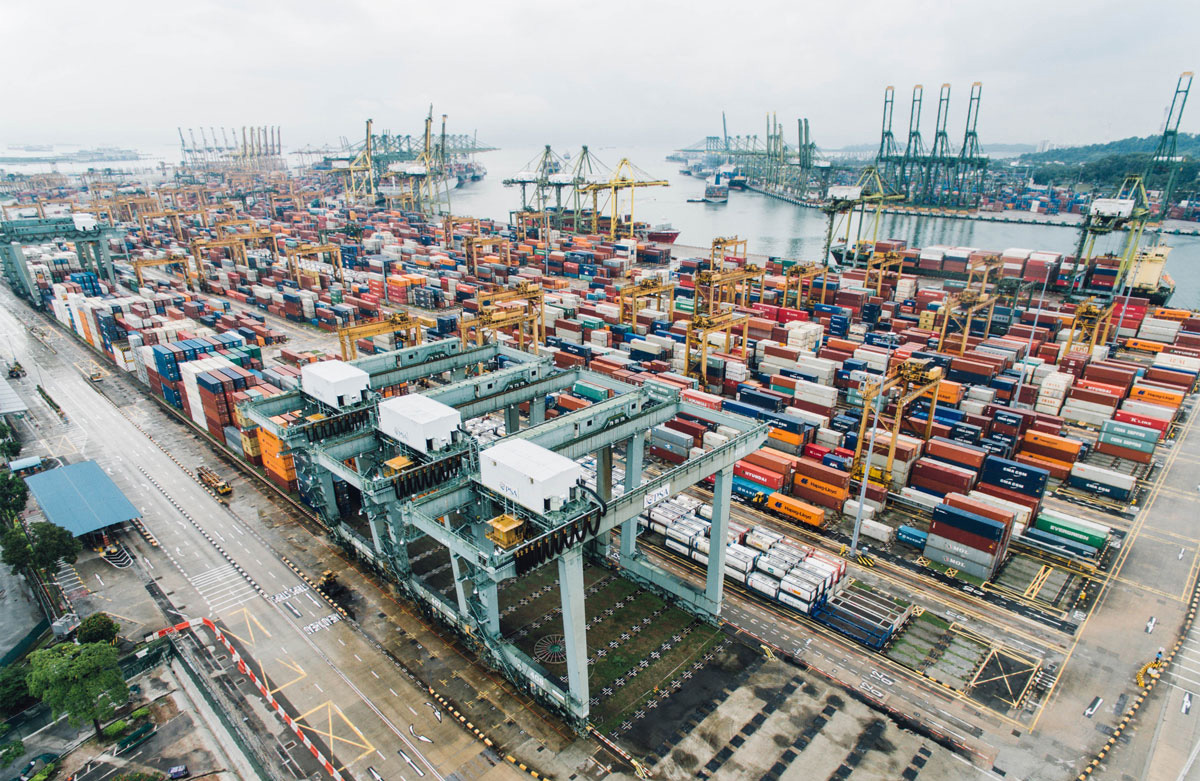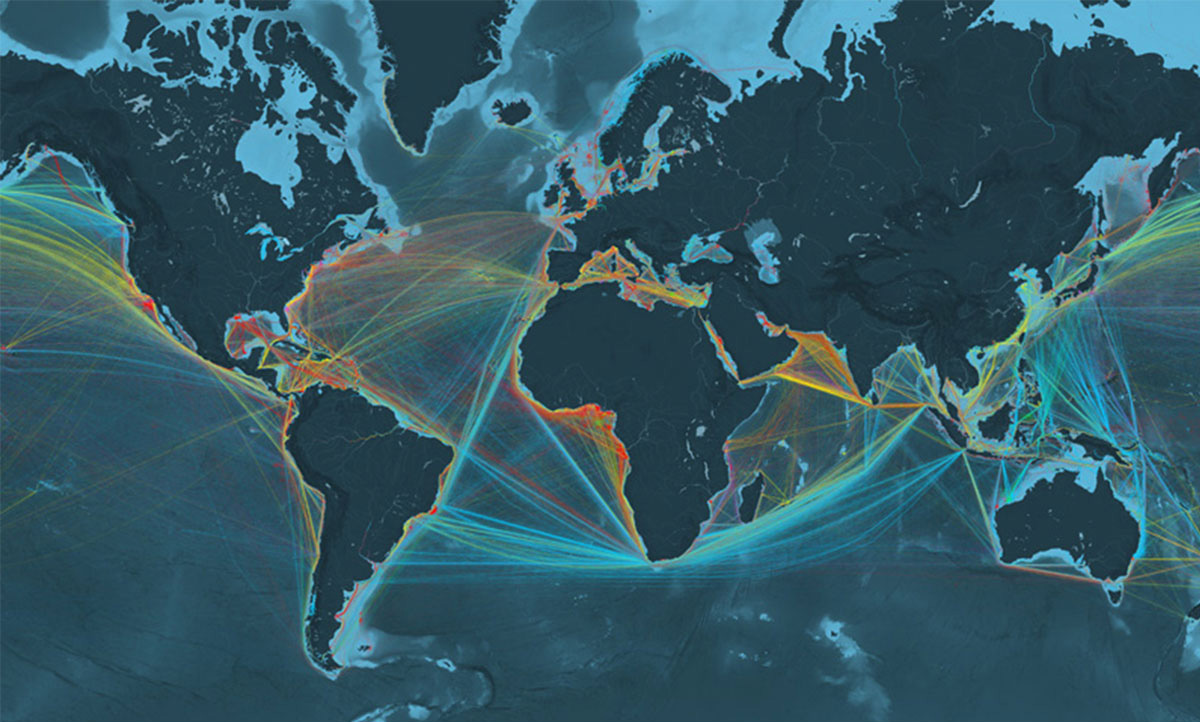The Bartlett’s Energy Institute is behind research helping to shape shipping’s transition to a low-carbon future.

Cranes for loading shipping containers onto deep-sea merchant ships, Bukit Merah, Singapore. 90% of all trade is carried by the global shipping industry. Credit: Chuttersnap for Unsplash
And because of a difference in the rules for transport on land and sea, shipping’s share of the globe’s GHG emissions could rise to more than 20% by 2050, according to EU estimates. That would put it ahead of any single nation as a polluter.
The exemption of shipping from climate change agreements has meant that the industry has so far avoided the terrestrial regulation that is seeing coal phased out and the mass arrival of electric vehicles worldwide. The Paris Agreement, for example, set targets for countries, but it left out supranational problems like shipping, which comes under the remit of the International Maritime Organisation (IMO).
It also means that international shipping’s impact has largely gone under the public radar, which is why, in 2016, The Bartlett’s Energy Institute’s shipping research group wanted to do something that would raise awareness by talking to people outside of the shipping bubble.
The result was shipmap.org – a collaboration with digital journalism studio Kiln and funded by the European Climate Foundation – that visualised the movements of the world’s commercial shipping fleet over the course of the year 2012. The map revealed the extraordinary extent of modern shipping’s reach; generated more than a 100,000 Twitter impressions and was covered not only in the specialist press but by the likes of VOX and Fast Co.
Forecasting shipping’s future

Cranes for loading shipping containers onto deep-sea merchant ships, Bukit Merah, Singapore. 90% of all trade is carried by the global shipping industry. Credit: Chuttersnap for Unsplash
For a decade, the group has been modelling shipping trends and energy demands, and providing the data on ways in which the maritime transport sector could act to decarbonise profitably, as well as the risks of ‘business-as-usual’ thinking for an industry that, until recently, has not pushed itself to reform.
For example, a joint study led by UMAS, the commercial research arm of the Energy Institute’s shipping group, found that 80% of industry respondents feel Zero-Emission Vessels (ZEVs) are necessary and that reliability and scalability are more important than cost. But in the same study, the majority of respondents didn’t want to pay more than 10% more for ZEVs than current vessels or see a carbon price higher than $50 a tonne (that carbon price is far above current levels, but much lower than the estimates many academics reckon necessary to limit global warming to two degrees Celsius.)
Through its GloTraM model, the shipping group offers scenarios to help shipowners and charterers (those who rent ships) understand the commercial consequences of a range of carbon prices alongside other germane factors such as freight rates, ship speeds and the cost of ZEVs. While the models may not always produce results that shipowners want to hear, they help to illustrate the impact of making short-termist decisions: notably, ending up with a fleet of ships too expensive to adapt to new technological regulations.
The group has also mapped out the potential for new fuels under different economic scenarios and using various financial metrics, such as the cost of storing new fuels – hydrogen vs biofuels, for example – and what it considers to be ‘bridges to nowhere’, such as investment in Liquefied Natural Gas or LNG.
Shipping changes tack

A still from Shipmap.org, an interactive map showing the movements of the world's commercial shipping fleet. Credit: Kiln
It marked the first time that the global shipping industry had defined its commitment to tackle climate change. Legally binding policy measures are expected over the next few years and a revised plan is due in 2023, but even with the lowest level of ambition, the target requires the shipping industry to push through rapid technological changes to produce ZEVs, moving from fossil fuels to a combination of electricity and renewable fuels derived from hydrogen and potentially bioenergy.
As Smith said at the time of the announcement: “While such changes are massive for a global industry, which has a fleet of more than 50,000 ships trading internationally, UK-led research has shown that with the correct level of investment and better regulation, these reductions can be achieved.”
 Close
Close




